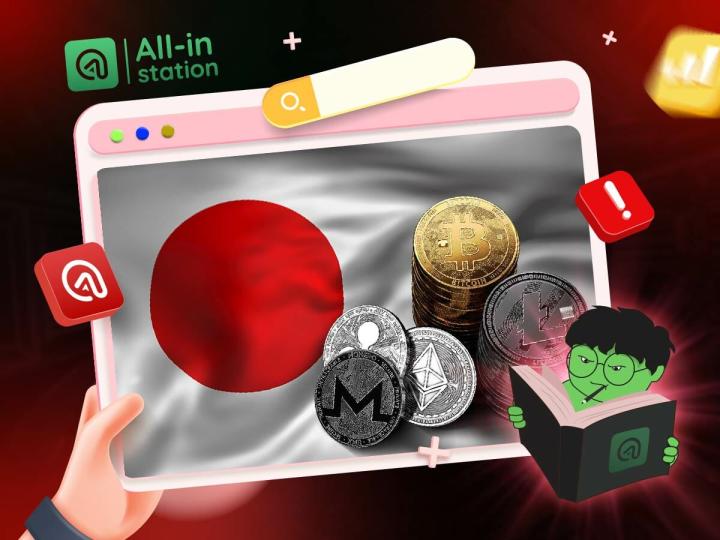Author: WOO
Pi Network is a new digital cryptocurrency platform that uses mobile devices and has a low barrier to participation. Unlike traditional Bitcoin mining that requires a lot of electricity and specialized equipment, Pi Network allows users to "mine" through a mobile app, greatly reducing the technical and cost barriers and allowing more ordinary people to participate in the cryptocurrency ecosystem.
At first glance, it seems like a normal "crypto" project, but that's not the case. Pi Network was founded in 2019, but it has not yet launched the mainnet, and mobile mining is still in the "mining air" stage. In the token acquisition mechanism, a higher proportion is to increase one's mining share by recommending friends to use the registration code, which is more like a pyramid scheme than mining based on blockchain technology such as PoW and PoS consensus mechanisms.
However, after a six-year wait, Pi Network has finally announced the launch of the mainnet, and multiple exchanges have listed the token for trading. It seems that Pi is serious this time, so how should we evaluate the valuation of Pi coins?

Total Supply and Circulating Supply of Pi Coins
The Pi Network official has not clearly disclosed the final total supply cap of Pi coins, but according to community and whitepaper information, it is generally believed that the maximum supply of Pi coins is about 100 billion. This means that if each Pi coin is worth $1, the fully diluted market cap (FDV) will reach $100 billion. As of the end of 2024, Pi is still in the mainnet closed period and has not yet been fully opened for trading, so the actual circulating supply is limited. According to blockchain explorer data:
- August 2023: About 1.97 billion Pi have been migrated to the mainnet (of which 1.29 billion are locked by users)
- September 2024: The cumulative mainnet migration supply has increased to about 4.07 billion (13.5 billion locked), an increase of 106.6% in just over a year
- January 2025: The cumulative mainnet migration has reached 5.56 billion, of which about 660 million are still in a locked state. The supply has increased by 36.6% in just three months
In terms of total supply, the Pi whitepaper mentioned that when the mainnet is opened, users may have already mined 10-20 billion PI. In other words, the initial actual circulating supply may only be a small part of the total, and most of the Pi coins will be gradually mined over time. This also means that the supply will be controlled in the short term, but the long-term potential inflationary pressure will be huge.
Market Demand and Potential User Data
Since the launch of the mobile mining app in 2019, Pi Network has claimed to have attracted millions of users globally. In terms of user base: According to the Pi team, there are over 60 million registered users worldwide. However, it is worth noting that only a portion of them have completed KYC verification. In 2023, Pi's official said that about 12 million people had passed KYC verification. Even by early 2025, the on-chain data shows that the total number of mainnet wallets is only about 9.11 million, accounting for only 15% of the claimed users.
This indicates that although the registration numbers are huge, the proportion of truly active and migrated users is limited.
In addition, the daily active usage can also reflect the actual demand. According to the third-party blockchain explorer ExplorePi, the Pi mainnet has an average of about 20,000 active wallets per day, with a peak of about 42,000 in January 2025. Compared to the Pi Network's claim of tens of millions of users, this activity level is relatively low.

Valuation Model and Possible Price Range
Based on the above information, we can try to establish several valuation models for Pi coins to estimate their price range. Common cryptocurrency valuation approaches include "market cap" and "OTC price".
Market Cap:
In the case where the current token total supply is 100 billion and the circulating supply is estimated to be 10 billion:
- Benchmark Dogecoin: The user community-driven characteristics of the two are similar. If Pi can replicate DOGE's success, then based on DOGE's current $40 billion market cap, the Pi token value could reach $4.
- Ranked in the top 50: The current top 50 coin by market cap is POL, with a market cap of $2.7 billion. If Pi can rank in the top 50 at launch, the token price will be around $0.27.
- Ranked in the top 100: The current top 100 coin by market cap is XTZ, with a market cap of $920 million. If Pi can rank in the top 100 at launch, the Pi token value could reach $0.092.
OTC: Over-the-counter (OTC) trading has always been the main way for Pi coin enthusiasts to exchange. In the absence of an open market, price differences have emerged in different regions:
- In mainland China and some Southeast Asian regions, there were rumors that the private purchase price of Pi coins was around a few Chinese yuan. In the Taiwan market, as mentioned earlier, the OTC purchase price is around $0.23 to $0.85 USD.
- In some foreign communities, some people are willing to privately trade small amounts of Pi at a valuation of $5-10 USD, more as a bet on the future upside after listing. But this type of private transaction is full of fraud risk and limited in quantity, and cannot be regarded as the mainstream price.
- Some merchants and users have privately agreed to accept Pi coins in exchange for goods or services, to pre-position the Pi ecosystem. This can be seen as an implied price in the OTC application, with each Pi coin valued at $1-$3, but this is more due to the merchant's marketing or support for the Pi community, and may not necessarily represent their willingness to purchase Pi coins indefinitely.
The market valuation of Pi coins will depend on the interplay of supply and demand, as well as confidence and consensus:
- Supply perspective: The limited initial circulating supply may push up the price of Pi coins, but in the long run, the huge total supply (100 billion) is a Damocles' sword. If the application ecosystem cannot expand to absorb this supply, the price will eventually face downward pressure. Therefore, the Pi project team may need to adopt measures such as controlling the inflation pace and increasing application demand to maintain the coin value.
- Demand perspective: Hundreds of thousands or even millions of active holding users will be the cornerstone of the value of Pi coins. After the exchange listing, the behavior of these users (whether to hold and wait, or to sell and cash out) will directly affect the market cap trend. If most people choose to continue holding and treat Pi as a long-term asset, and external capital inflows are optimistic, the Pi coin market cap may reach the hundreds of millions of dollars level, pushing the price to the $1-$3 mid-to-high range. On the contrary, if there is a selling frenzy at the time of listing, with supply exceeding demand, the market cap may only stop at the tens of millions of dollars level or even lower, and the price may fall back below $1.
- Market positioning: If Pi Network can prove that its growth is not just based on a pyramid-like model, but truly on blockchain technology and applications, the market may give it a higher valuation multiple (similar to the level of XRP, BNB, etc.). Otherwise, if the negative narratives (pyramid scheme, lack of blockchain support, etc.) are confirmed, Pi coins may be doomed to suffer value shrinkage.
The valuation of Pi coins is chaotic, but one thing that can be certain is that short-term volatility will be extremely intense. We suggest paying attention to the following indicators to analyze the valuation trend of Pi coins:
- Trading volume and turnover rate in the first week of listing (reflecting market enthusiasm)
- Mainnet unlocking progress (pace of supply release)
- Pi ecosystem application landing (determines long-term demand)
The most important thing is the overall crypto market sentiment. In a bull market environment, speculative capital is abundant, and Pi coins are easy to get a higher valuation; on the contrary, in a bear market, even good projects are difficult to escape the downward trend, and the current lack of market liquidity also makes the valuation situation less optimistic than before.
However, it is difficult to calculate the craziness of human nature in the valuation calculation. What Pi Network is known for is its community cohesion.
Without real applications, the ability to "break out" relies on the power of word-of-mouth propagation, which is quite similar to the composition of meme coins. The reason why Pi Network has such a strong community is that the token distribution mechanism has set up an invitation mechanism and a hierarchical structure, allowing the inviters to gain benefits by attracting new users (such as increasing their mining speed).
The interest structure and dream of the Pi Network have been closely linked for six years, and both the project and the community have remained stable, with a lifespan that has already exceeded 95% of the projects. Most community members have become staunch believers and have even vowed not to sell any Pi coins after the launch, but instead to buy more. With the low initial circulation and the loyalty of the community, it is difficult to estimate the market capitalization that the six-year-old Pi Network can reach. However, it is foreseeable that the token will experience significant volatility upon its initial launch.






